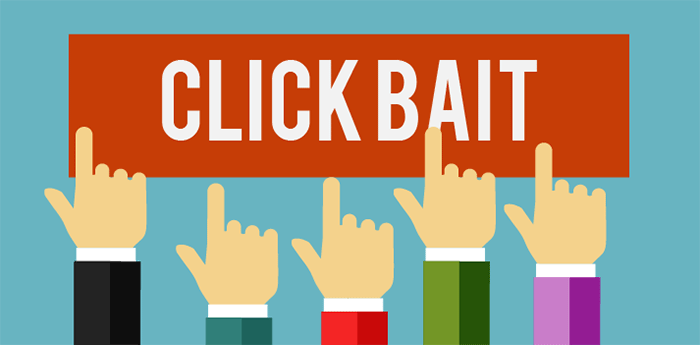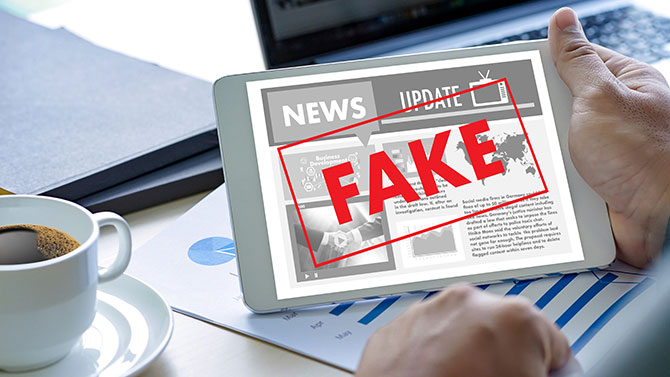Everyone knows that digital marketing is a growing trend, and it’s not going anywhere anytime soon. But what about false digital marketing? This is the fake marketing that companies use to manipulate you into clicking on their ads.
For example, if you see an advertisement for “fashion” on your Facebook feed and click the link to take a look at it, they’ll redirect you to different pages all about weight loss pills or some other completely unrelated product. They’re trying to trick you into the purchase so they can make money off of you!
False digital marketing is considered unethical because it involves deceptive practices and ruining people’s trust in brands. As such, many websites have started policing false advertising and punishing those who partake in this behavior by removing them from their sites.
Unfortunately, removing all false advertising from the Internet is impossible. That’s why you need to be able to recognize false digital marketing when you see it before they can try to trick you into clicking on their ads!
Here are some ways that companies use to trick you and recommend how to avoid these tactics:
1) Clickbait Headlines

Fake digital marketing usually takes the form of a misleading clickbait headline. These are usually headlined that heavily exaggerate or insinuate something that is not, in fact, true about the content you’ll find if you actually do click on the link. For example, a fake news website may come out with a story titled:
“Teens Eager to Try Smoking for the First Time, Watch Out!” The story may imply that teens smoke more than they did before, but in reality, this is not the case. Another example of clickbait headlines could be something such as “6 Reasons You Absolutely Shouldn’t Eat This” or “Why You Must See This Before It’s Gone.” The “reason” should be more than one sentence long, and the content that follows the headline shouldn’t be misleading.
Regardless of your political views, no doubt you have heard about fake news by now. Clickbait headlines are false digital marketing because they try to deceive the reader into clicking on their ads.
Fake news outlets usually create these clickbait headlines to attract people who are easily tricked so they can make more money by getting them to click on their ads.
These headlines have become increasingly common in recent years with the popularity of fake news media outlets like Facebook and Twitter. On these sites, users often come across videos showing various shocking things, such as “Shocking: Obama Holds Secret Meeting During Trump Inauguration.”
These clickbait headlines are usually posted by random users that want to get more views on their videos or articles, and they’re not affiliated with any media website.
However, they may also come from websites as well. If you see a headline that sounds completely unrealistic, don’t click on the link! If it’s a video, don’t watch it. If it’s an article, be skeptical of some information presented and try to find out what is true about the subject.
2) Low-Quality Videos

Some companies use low-quality videos because they’re usually cheaper to make than high-quality ones. Although there are times when you can get by with a simple clip of someone talking while showing the product on their hand, this isn’t always the case.
If you see a video that doesn’t have high-quality footage, lighting, or sound, it’s more likely than not to be fake digital marketing. Few companies are willing to waste their time and money making videos that won’t result! With low-quality videos, they may even be using poor grammar or show the same clip repeatedly.
If you ever notice these things, chances are its fake digital marketing trying to sell you something. At the very least, they’re not spending much time or effort on that video because they know there are other ways to attract customers, for example, by using clickbait headlines or writing reviews that don’t sound real.
3) “Literal News”

What is it? Well, let me show you!
Sometimes, you’ll see a news article that doesn’t really contain any new information. It reports what happened in an event or something like the weather report on the same day. They may also cover stories that are already old.
These articles can be found on many different types of websites, and there’s also a chance they could appear in your social media feeds if you follow an account that promotes them.
Here’s an example: “Donald Trump Confirms That He Will Build A Wall On US/Mexico Border.” This article is just one way to get your attention by using a popular news story, and then the website or user adds their own opinion about it.
This is why you should be skeptical of news articles that appear on websites that aren’t very credible. Sometimes they’re fake because there’s nothing new to report in the news, but other times it might have been created to get your attention.
Another thing you should know about these “literal news” articles is that they sometimes use the same headline (i.e., “Trump Confirms That He Will Build A Wall On US/Mexico Border”).
In this case, if one website has already reported on it and another does too, there’s a chance only one of them is true. So, if you come across a news article title like that, check out the website to see if it’s real or fake digital marketing.
4) Fake Product Reviews and Ads

This type of false digital marketing usually involves ads on sites such as YouTube or Facebook. However, these can also be found in paid emails, links, and other places.
When you see a product in an ad that is very similar to another one with a different price, there’s a good chance the seller just created it. Generally, these types of ads are used on sites like Craigslist, where users post fake ads for products when they’re trying to sell something. They may even post photos or videos on their own website to make it look real.
Another way sellers may use fake digital marketing is by creating advertising for a product that doesn’t even exist. This can be done in many ways, such as listing an item on Amazon with no clear description of what it actually does or posting one-word descriptions such as “book” or “DVD.”
If you see either of these things, it’s a good sign that whoever is advertising the product is not interested in selling it to you. Instead, they’re just trying to get your attention, so you’ll click on their ad and give them money!
5) Fake Trusted Places

In some cases, you might come across these sites:
“Google Reviews”
These are phishing sites that try to steal your information and money.
Basically, they look like the real thing at first glance; but if you dig a little deeper, you’ll find some things that don’t seem right! They could be using an old logo for a company or a design that looks similar to the branding of another actual website, or they could just be using content that is a little off.
These are phishing websites because the people who create them try to trick you into giving out your information. For example, if you come across one that looks like it’s from eBay but asks for login info–don’t do it! This is a scam website that someone created to try and get your eBay info so they can use it for themselves.
These types of “fake trusted places” are usually found in ads or on websites that seem questionable at first glance. If you come across any of them, don’t give out any information or money; instead, be very careful and use a search engine to determine if they are actually real!
6) Fake Followers on Social Media

It’s common knowledge that followers can make or break your social media marketing strategy. This is why people will sometimes pay money to get “fake” followers on their accounts. The idea behind this is simple: “If my Instagram account has a lot of followers, other people will see that and want to buy my product.”
Sometimes people can tell if someone’s followers are fake because the numbers don’t add up (i.e., someone with 100k followers only follows 200 people themselves). However, most of the time, it’s tough to figure out. This is because people who buy fake followers may do things like only following a few people themselves and only using a photo from a couple of years ago.
For example, if you know someone who has thousands of followers on Instagram but recently posted something about how they are bored with their life–they might have bought their followers to create an image for themselves.
You might also see many “fake” followers if you notice that someone has only been on social media for a short time, but they have a high number of followers. This is because it’s usually hard to get real followers if you just joined social media or haven’t posted much yet. Instead, people may pay for an instant boost to their account.
The other way people can get fake followers is by paying someone else to follow them for money. Usually, the buyer will give this person a small amount of money for thousands of followers from different accounts. After all, if you have 5,000 followers and each one follows 100 people, then that’s 50k people you could potentially get to see your ads!
In most cases, these people are just trying to use social media accounts to make money.
However, it’s also possible that some of them could be doing this to manipulate the results of online polls (i.e., they pay someone else to follow their account and then vote for a certain candidate because they think the majority of people are voting that way).
For this reason, it pays to be careful when looking at online polls (especially those found on social media). Try to find out who conducted the poll and make sure their follower account is not full of fake followers.
7) “Free” Trials

If I see many advertisements for something that seems too good to be true, then there’s usually a reason for it. That’s why you should always be very careful when signing up for things like “free” trials or “special offers.”
First off, these types of ads are usually on websites that don’t look like they’re official and could potentially be a scam. For example, they might have misspelled words, or the layout looks funky. Usually, these things are small details that you might not notice at first glance (especially if you’re in a hurry), but it’s important actually to look closely at what you’re signing up for!
Another thing is that even though the word “free” is in the title, you can end up spending a lot of money if you aren’t careful. For example, when I was looking for “free” wifi hotspots near me, the name made me hopeful that I would never have to pay for another internet connection again!
However, it turns out that what they meant by “free” was that I could sign up for a trial period, and then I would have to pay after the free trial ended. This is something that I never saw in the first place because it was buried somewhere in the terms and conditions (I know this because I tried to find it after someone told me).
This doesn’t mean you should always assume the worst about every free trial offer. It’s just important to do your research and make sure you know exactly what you’re getting into before you sign up.
Also, always check for any hidden fees or costs that might come out of nowhere after the trial ends (don’t forget–there are way more people trying to sell things online because now they have “free” internet!).
In general, it’s usually good to ask questions and do some research before signing up for anything. You should always be asking yourself: Does this seem fishy? Is this deal really too good to be true? With that being said, there are also many great deals out there whether you’re looking for free wifi, to be able to watch tv, or even for new furniture!
In this post, you’ve learned how to find your blog audience and avoid false digital marketing. We hope that these tips will be helpful for you as you grow your company online!
Opinions expressed by AsianBlurb contributors are their own.
Maham Qasim is an English Literature and Economics student at Forman Christian College University with an interest in writing. Maham was born in Pakistan and raised in Saudi Arabia and is now pursuing her education.




































